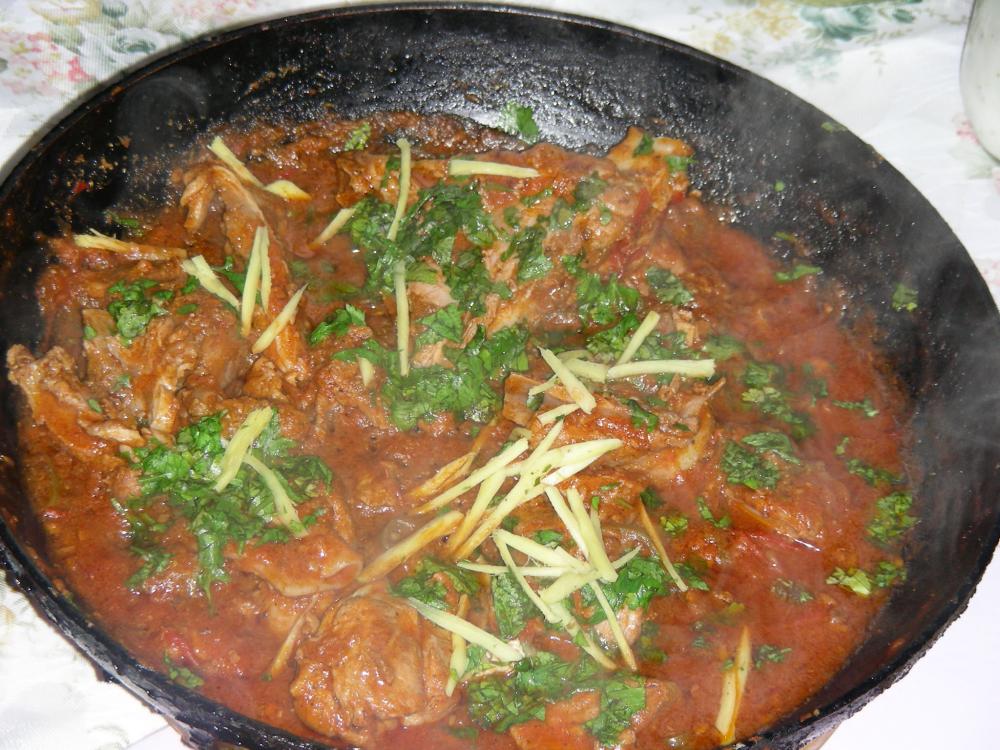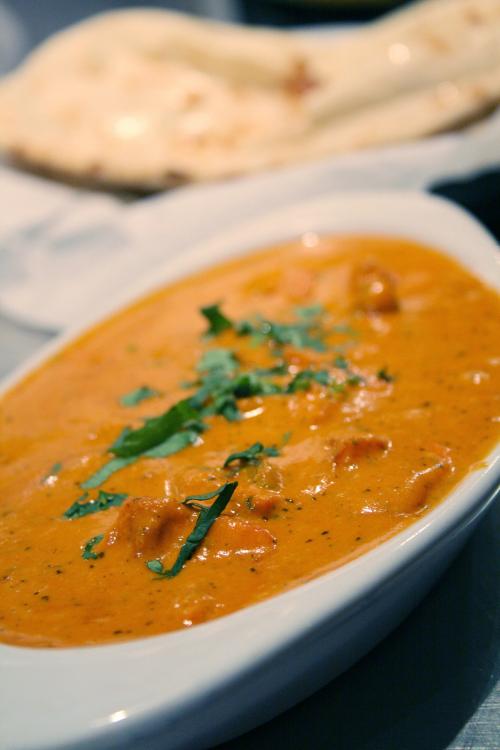11C. Balti + More, not Baltimore
Two dishes often said to be British innovations are among the most popular in Indian restaurants in Britain. Let's have a look.
Balti, also known as balti gohst (Urdu: بالٹی گوشت, Hindi: बाल्टी गोश्त) is often said to have been invented by Bangladeshi chefs in what is now known as the Balti Triangle in Birmingham, England, sometime in the 1970s. Even the city government promotes the city by unequivocally sloganeering that “Birmingham is the original home of the Balti”. Given that balti has been known and eaten in northern India and Pakistan for many years longer, that seems unlikely. It is more likely to have arrived in Britain in the 1970s.
Balti Gosht
The word ‘balti' , found in several of the Indian subcontinent's languages seems to have originated in the Portuguese balde, meaning a bucket or pail. This was transferred to refer to type of deep cooking pot, resembling the Chinese wok. This was then transferred to a dish cooked in said pot, not an unlikely scenario when you consider that many dishes across the world’s cuisines are so named – casserole, tagine and paella leap to mind.
Pat Chapman, founder of The Curry Club in the UK, who writes about Indian restaurant food, sees a link between balti and Baltistan, the Kashmiri state (administered by Pakistan), bordering China. Other writers dismiss this, pointing out the dish balti bears no resemblance to any food traditionally eaten there.
Balti as served in Pakistan
Whatever the origin of the dish, by the 1990s it had spread from a small area of Birmingham, across Britain and Ireland, then to places such as New Zealand and Australia. I’ve seen it on menus in Indian restaurants in Hong Kong. It is now even sold in British supermarkets in a do-it-yourself version. There is (or was) even a brand of Balti Wine, supposed to marry well with south Asian food, especially balti. It is/was made from Argentinian grapes, but developed in 2004 in Manchester, England by a Pakistani entrepreneur. It should not be confused with Bălți, the Moldovan wine region. Note: I have been unable to determine if this wine is still available. The company’s website is dead and the domain up for sale at ₤1,795 (~ $2,530 USD)
So what is a balti, the dish? Basically, it is general type of curry, using customer chosen meats and vegetables, but instead of being slowly stewed like most Indian preparations, balti is quick fried using a stir-fry technique like that of Chinese cooking. It also tends to use vegetable oil as the frying medium rather than the ghee (clarified butter) used in most of the subcontinent.
_____________________________________________________________________________________
And so I come to Britain’s National dish (according to Robin Cook (1946 – 2005), the late British government foreign secretary who praised the dish in a 2001 speech on Britain’s multi-ethnicity).
Chicken Tikka Masala
Chicken Tikka Masala
According to the legends, in 1971, someone, said by some to have been a bus driver, somewhere in Britain, ordered the well-established dish, Chicken Tikka which originated in the Mughal Dynasty (c. 1526 to 1857). It is a dish of meat or paneer (a type of Indian soft cheese) marinated in yoghurt and spices then baked in a tandoor, a traditional clay oven (although today they may be made from steel.)
The fabled bus driver found the dish too dry for his taste, so asked for it to be dressed in a curry sauce. A chef added some masala sauce and Chicken Tikka Masala was born! He spread the word more and more people requested the dish, so it was added to the menu increasing its popularity and other restaurants began to copy it. By the mid-1980s it was the nation’s favourite curry, if not quite a National Dish. It took another decade to cement that reputation.
So much for legends. The first problem is that no one has ever definitively identified that restaurant where the genesis supposedly took place. Various claims have been made across the country from “near London” to Glasgow in Scotland.
The modern-day pundits are very divided, with a few backing the bus driver theory to an Indian journalist suggesting a link to a dish from the Punjab region in the north of India bordering Pakistan. The most common, and in my opinion most likely, view is that it was invented by Bangladeshi chefs some time in the 1960s and lay dormant until awakened when discovered in the early 1970s.
Many writers have noted its similarity to murgh makhani aka butter chicken, a dish of chicken in a spiced tomato, butter and cream sauce. This dish is known to have been invented in Delhi, India in the 1950s by the chef owner of the Moti Mahal restaurant. It is said the dish was invented accidentally when tandoor-cooked chicken was mixed with tomato gravy, rich in butter and cream. Sound familiar?
Bizarrely, one writer also claims that Hannah Glasse’s 1747 recipe for curry which I referenced above is also similar to butter chicken, although how she copied a recipe created 200 years later goes unexplained. There is only a vague resemblance that I can see, in that they both use chicken and Glasse does fry her meat in butter, as did most cooks then. In the later version of her recipe, she also adds cream. She probably had no access to tomatoes, which were only then beginning to be eaten in Britain, despite having been introduced much earlier.
The ‘fusion’ origins of the dish gain weight from the name, which itself is a fusion of different languages, tikka being from the Hindi or Punjabi टिका ṭikka, which in itself came from the Turkic word tikkü, meaning "piece" or "chunk", and masala from the Urdu ماسالا masala meaning “spice mix”.
Whatever the origins, the dish has become Britain’s favourite curry and one of the nation’s top dishes.It is even said to be the second favourite 'foreign' dish for home cooking, but as the top favourite is Chinese stir-fry which isn't just one dish (actually more of a cooking technique), I'd call chicken tikka masala number one. From Britain, the dish has spread around the world, even being found today in India’s own trendy restaurants. Outrageous cultural appropriation, I say! 😂
Image Credits:
1. Balti Gosht - Image by ayes - licenced under CC BY 2.0
2. Balti Gosht in Pakistan - Image by Miansari66 - Public Domain
3. Chicken Tikka Masala - Image by Michael Hays -licenced under CC BY 2.0





